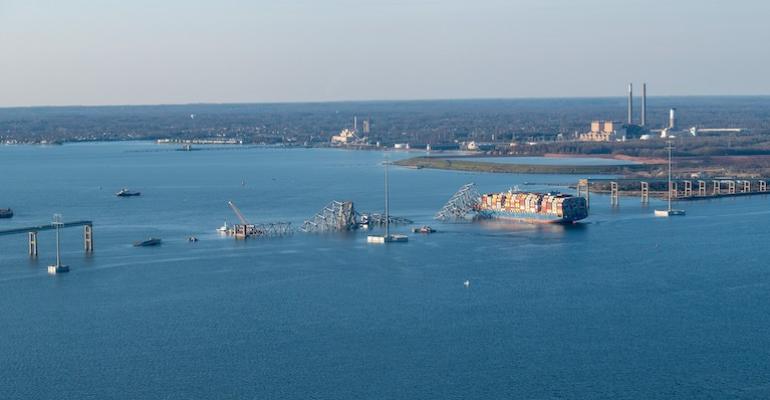In the full committee hearing, following preliminary statements from four top officials with an involvement in the Dali incident, as well as broader responsibilities in their respective agencies, Congressional representatives on the Committee all had opportunities to present queries to the agency representatives appearing. During the lengthy meeting, some 30 representatives from both the Republican and the Democratic parties asked questions on wide range of topics.
Jennifer Homendy, Chair of the NTSB, also presenting to the Committee, stressed that the report released the previous day was only preliminary, and that the NTSB investigation would continue “to follow the evidence”.
In response to questions on causation of the accident, she noted the human error that occurred the previous day, March 25th, while the vessel was berthed in the port, “when a crew member mistakenly closed an engine damper”, triggering an initial blackout, which was followed by the restoration of power, and then a second blackout. “When recovering from the second blackout, the crew switched to a second set of transformers and breakers, from those that had been in use for several months,” she explained.
She concluded this part of remarks by saying that: “Switching breakers is not unusual, but may have affected operations the very next day on the accident voyage. The configuration of the breakers remains under investigation.” Several times, she stressed that Hyundai, the manufacturer of the electrical switchboards in the ship's engine room, was cooperating closely in the NTSB investigation.
During detailed questioning from Committee member Brandon Williams (Republican- NY State), Homendy explained that the NTSB was looking at the individual components within the various switchboards, and if the particular item does not come from Hyundai, we will work with whomever that manufacturer is”.
Rep. Williams, who served as an officer in the US Navy on nuclear submarines, asked about investigations into potential cyber-related issues, with Homendy responding, “Currently, we have no evidence at this time to suggest that this was a cyber security threat…It has been stated…that the Coast Guard and the FBI did not believe that this was a cyber security issue”.
At one point during their exchange, Rep. Williams, with deep experience in electrical systems, said, “From reading the preliminary report, it’s not clear that anybody knows why those breakers tripped.” He urged that NTSB to look deep into the individual components, after dis-assembly of the switches.
At various points during the three-hour hearing, Homendy was asked if there was an evidence of criminality in the incident. In a response to Rep. Williams, she said: “We have a Memorandum of Understanding with the FBI that if there is any evidence of [cyber security issues], we have to turn this over to them immediately.” When asked about investigations of criminality, she said, “I am aware that there is some work being done by the Department of Justice, but that’s not within the NTSB purview”, adding that any findings suggesting nefarious activity (including cyber) would be turned over to the FBI and the Department of Justice.
The US Army Corps of Engineers (USACE), represented by Major General William (Butch) H. Graham, Deputy Commanding General, Civil and Emergency Operations, highlighted the progress quickly after the March 26 accident in opening temporary channel, including one with a 35 ft. draft, connecting the Port of Baltimore with the Patapsco River, which in turn, leads to the Chesapeake Bay. He said that the USACE, still in the midst of debris removal, is expecting that the 50 ft channel will be open by the end of May.
The representative from the US Coast Guard (USCG), Vice Admiral Peter Gautier, Deputy Commandant for Operations said that, all going well, the vessel could be refloated and removed from the main channel early next week. It will be brought to the Seagirt Marine Terminal.
Resources:
https://transportation.house.gov/calendar/eventsingle.aspx?EventID=407468
https://www.ntsb.gov/investigations/Pages/DCA24MM031.aspx
https://www.ntsb.gov/investigations/Documents/DCA24MM031_PreliminaryReport%203.pdf
Copyright © 2024. All rights reserved. Seatrade, a trading name of Informa Markets (UK) Limited.
Add Seatrade Maritime News to your Google News feed.  |

